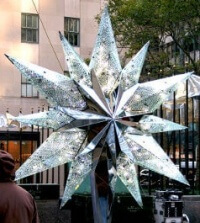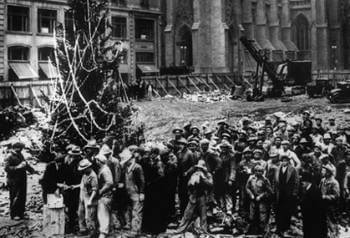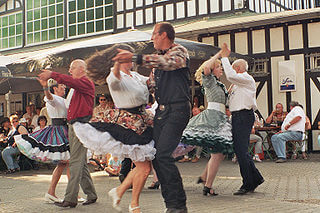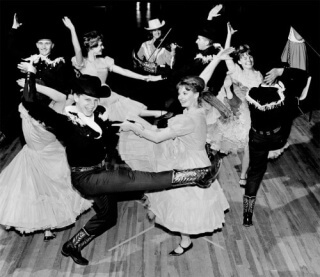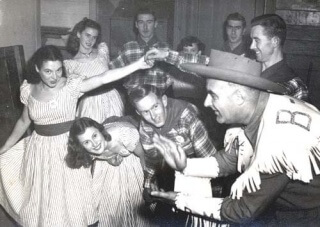November 2 is Plan Your Epitaph Day
Depending on how you view it, a tombstone is your last chance to say goodbye, crack a joke, be profound or otherwise make cemetery visitors imagine you were cool and wish they’d known you before they move on to visit their Nana’s weed-covered grave.
Plan Your Epitaph Day was created by Lance Hardie in 1995 to coincide with Day of the Dead (Dia de los Muertos), a Mexican holiday that honors the souls of departed loved ones. Hardie’s goal is simple: to make sure that we take control of our epitaphs, those few all-important words that will tell those who see them what we’d like them to think about who we used to be.
Playing with the idea of death is encouraged at this time of year. We dress up for Halloween and laugh, perhaps a bit timorously, at shadows. It’s also a time for reflection and mental housekeeping, as we’ve seen with holidays recently profiled here: such as Create a Great Funeral Day, Visit a Cemetery Day, even National Magic Day with its tribute to the death of Harry Houdini.
Let’s take a look at a couple of epitaphs quoted by Hardie.
W.C. Fields
Sadly we must begin by debunking a favorite of ours: W.C. Fields did not have this on his gravestone:
“Here lies W. C. Fields. I would rather be living in Philadelphia.”
Fields was no fan of Philadelphia, famously calling it “a cemetery with lights.” When he was invited to contribute his own epitaph for the June 1925 issue of Vanity Fair, it was no surprise that Philly rated a mention. Since then, different permutations of the pithy comment coalesced into a myth regarding his gravestone.
Sadly, Fields didn’t use his headstone to take one last jab for posterity. (Perhaps he worried the joke would not stay fresh through the ages or didn’t care since he wouldn’t be around to witness it?) Instead, it reads “W.C. Fields 1880 – 1946”.
William Shakespeare
Hardie also cites Shakespeare’s epitaph. This one does exist in Collegiate Church of the Holy Trinity in Stratford-Upon-Avon, England. The gravestone is badly eroded and reads:
GOOD FREND FOR JESUS SAKE FORBEARE
TO DIGG THE DUST ENCLOASED HEARE
BLESE BE THE MAN THAT SPARES THES STONES
AND CURST BE HE THAT MOVES MY BONES
Shakespeare didn’t leave a spooky epitaph to be studied and interpreted in perpetuity. He left instructions. In his day, it was accepted practice to dig up bones from the church’s graveyard and tombs, moving them to make room for more burials. They were placed in a charnel house and subsequently burned.
(Some claim this was called the “bonefire of the vanities.” Although that would be a heck of an origin story for the title of Tom Wolfe’s book, we could find no proof of it.)
Shakespeare knew and disdained Holy Trinity’s practice of recycling graves. He may have also meant to dissuade the government from moving his bones to Westminster Abbey. Thus far, his wishes have been honored.
What Now?
If the thought of penning your life’s final caption fills you with existential dread, Mr. Hardie is here to help. He will write it for you but won’t tell you how much it will cost you, just that it will be expensive.
He does make a couple of exceptions. If you are a death row inmate or a member of the U.S. military about to report to a war zone, he will write your epitaph for free. (You will need to provide proof of your orders, of course. Presumably, if you’re on death row, he can Google you.)
Let us take a moment to point out that many who die in prison have no means to pay for their funerals and end up in a prison graveyard like Captain Joe Byrd Cemetery in Texas, the largest in the country.
They lie beneath markers that bear only name, inmate number and date of death. Notorious killers are routinely identified by inmate number alone, to discourage visitation and vandalism. Not much need for epitaphs there, free or otherwise.
But enough of that. Let’s get back the fun stuff. Far be it from us to bring down the mood of such a happy occasion like planning our last words with some factual bummers. You’ll find funny epitaphs aplenty at MTWorld.
Here at Worldwide Weird Holidays, we like to imagine the impact this would have in any cemetery at dusk:
Feel free to use it: no charge. It’s our gift to you.
![]()

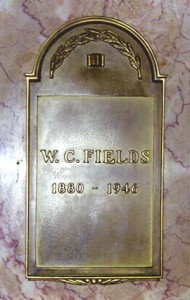
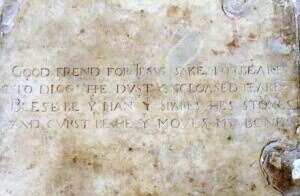
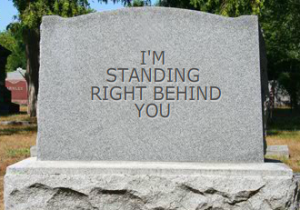
 Today is National Author’s Day. In 1928, teacher Nellie Verne Burt McPherson suggested the creation of a holiday dedicated to American authors at a meeting of the Bement Illinois Women’s Club.
Today is National Author’s Day. In 1928, teacher Nellie Verne Burt McPherson suggested the creation of a holiday dedicated to American authors at a meeting of the Bement Illinois Women’s Club.